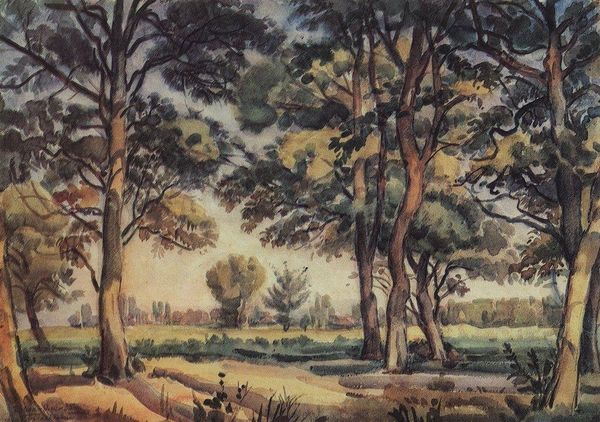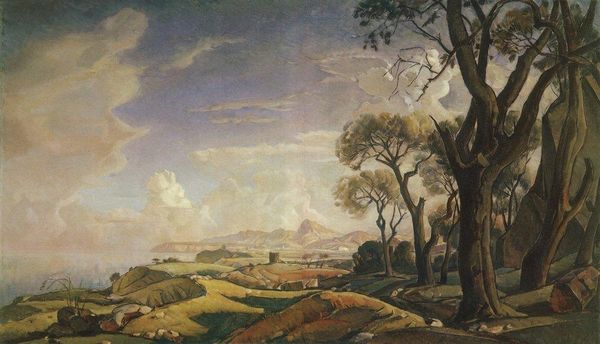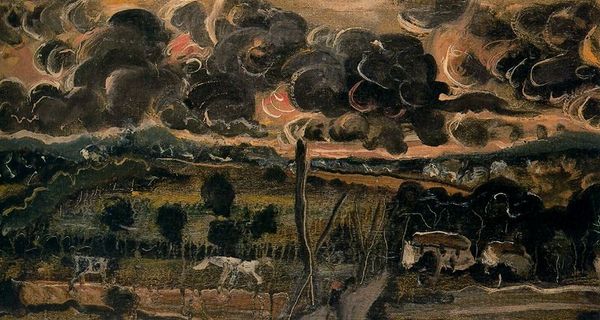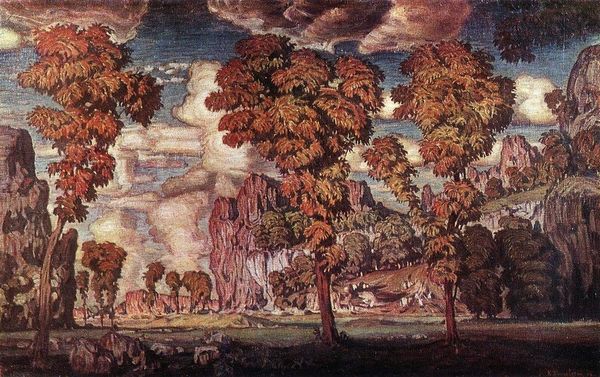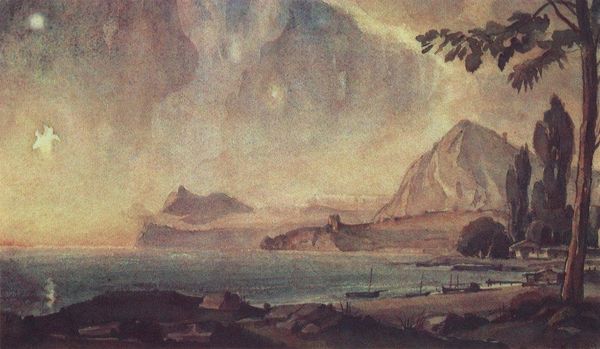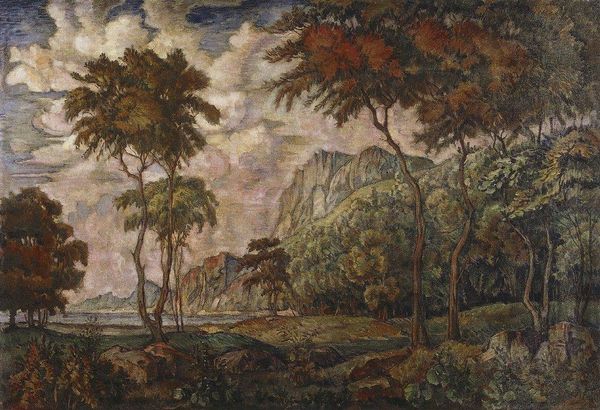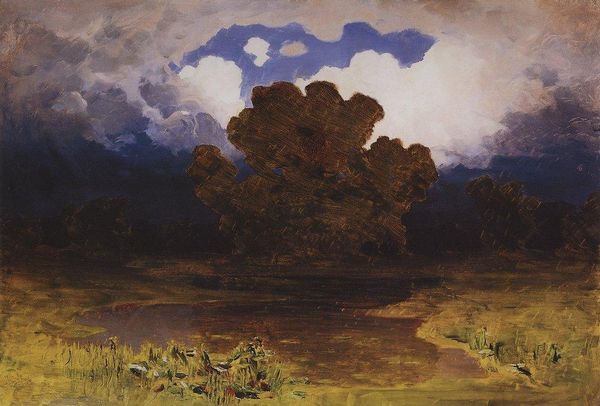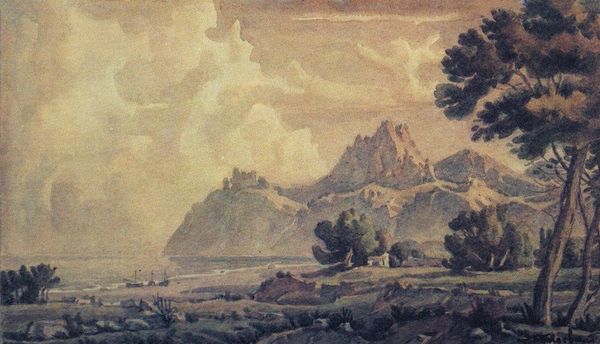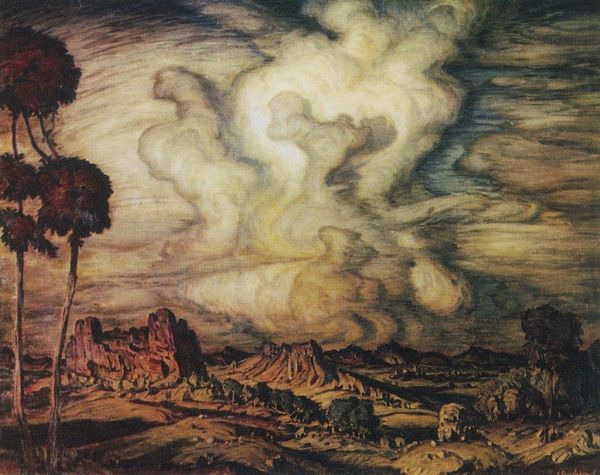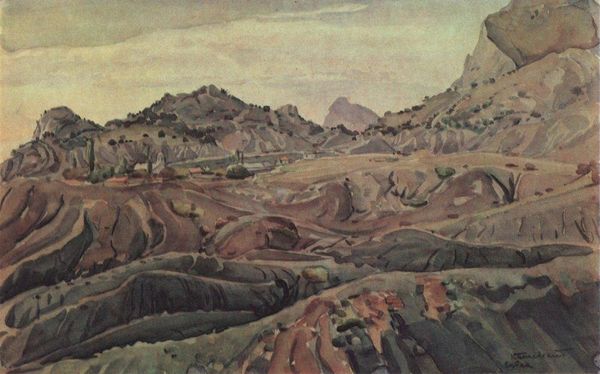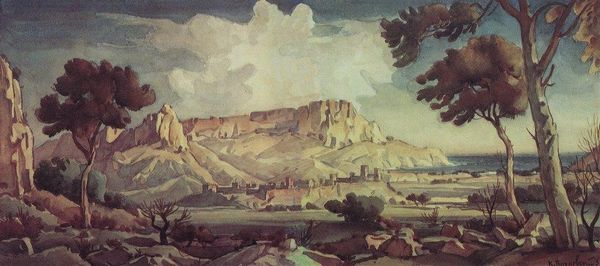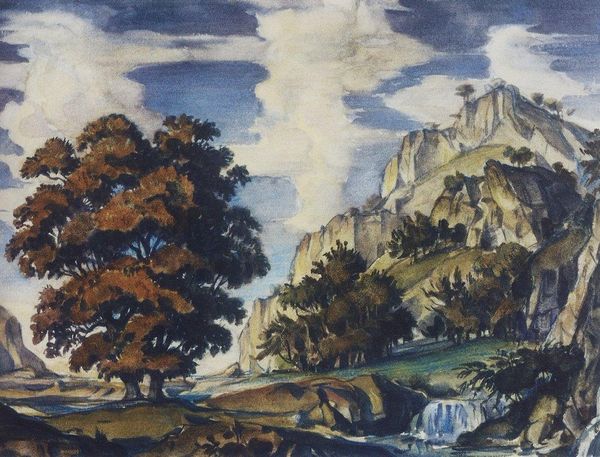
Copyright: Public domain
Editor: Here we have Konstantin Bogaevsky's "Autumn Evening," created in 1925. It’s an oil painting, though it almost looks like watercolor in its execution. The first thing that strikes me is the sort of desolate yet peaceful mood it evokes through its muted palette. What do you see in this piece? Curator: The strength of this painting lies in its composition. Note how Bogaevsky uses a limited color palette of ochres, browns, and grays to construct a landscape divided into distinct planes. Observe how the stark, almost geometric forms of the rocks and trees in the foreground create a visual barrier, guiding the eye towards the hazy, atmospheric distance. This carefully structured composition, although seemingly representational, emphasizes formal relationships and balances. The trees' bare branches mimic the jagged silhouettes of the distant cliffs. Editor: It’s true, the repeated shapes are quite striking. Does that contribute to its feeling of peace, that echoing effect? Curator: Precisely. The echoing of forms, in conjunction with the limited palette, imposes visual harmony across the scene, creating a sense of self-contained equilibrium. Consider the interplay of light and shadow – not for creating realistic depth, but for delineating abstract shapes and structuring the picture plane. Editor: So you're saying it’s less about capturing a specific scene and more about the arrangement of shapes and forms to evoke a feeling? Curator: Exactly. The subject is only the starting point for an exploration of pictorial space and form. The painting operates independently from any direct reference to an actual landscape or the autumnal season, instead presenting us with its constructed interpretation of it. Editor: That's fascinating; I initially perceived it as simply a landscape, but now I recognize how much of the emotional impact is generated from formal relations. Thanks! Curator: My pleasure. Observing how artists manipulate form, structure and materiality refines our appreciation and heightens the interpretive process.
Comments
No comments
Be the first to comment and join the conversation on the ultimate creative platform.
